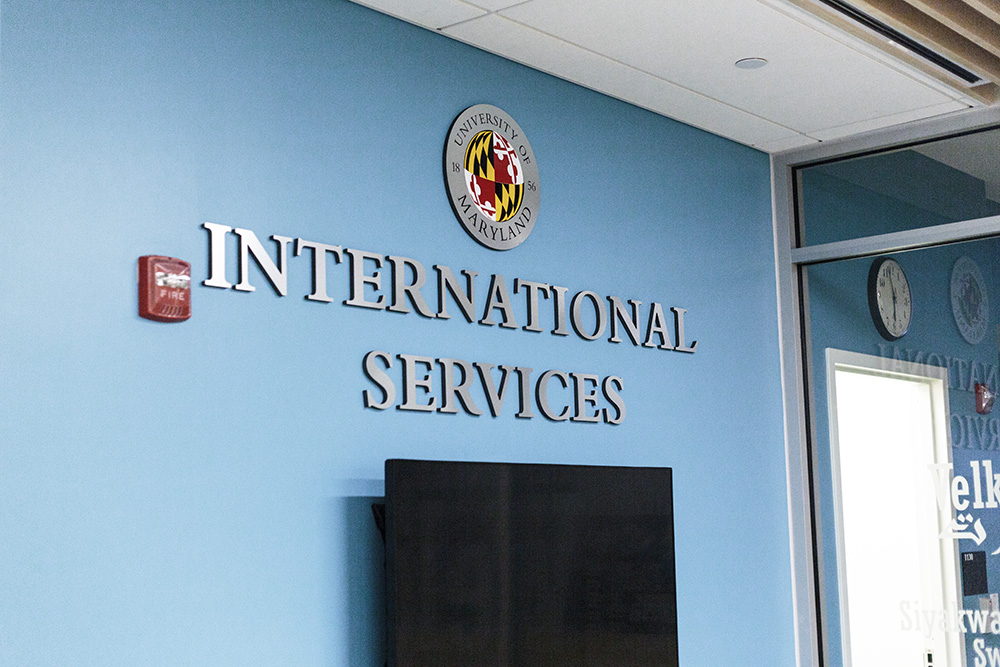University of Maryland President Wallace Loh addressed the new $125 semesterly fee for incoming international students during an April 7 Graduate Student Government meeting, inviting students who don’t want to pay it to attend another institution.
The fee, which will take effect in the fall, will provide support for international students through bolstered academic resources and career services, as well as additional staff to process student visas faster — all services students have asked for, Loh said.
Without the fee, international graduate students would not have access to these services, Loh said. He added if graduate students demand these services, they will have to pay for part of them.
[READ MORE: University of Maryland will implement a fee for international students by fall 2017]
“If they don’t want to pay it, they don’t have to come to the University of Maryland,” Loh said during the meeting. “They can go to any other Big Ten institution where they pay much higher in tuition.”
Among public Big Ten schools, this university has the second-highest tuition and fees for out-of-state graduate students, and fifth-highest tuition and fees for in-state graduate students, according to data from the University of Wisconsin-Madison.
International students made up one-third of the graduate student population in fall 2016, with 3,567 graduate students from foreign countries. There were also 1,311 international undergraduate students as of fall 2016.
The fee will not affect international students currently enrolled at this university, he said, adding that new and prospective students will be notified of the fee’s existence in advance.
“[The fee] will be prominently posted; they have fair warning,” Loh said. “They may say ‘wow, they’ve added $250, I will not come to the University of Maryland,’ fine. That was one of those hard decisions we make.”
Roozbeh Bakhshi, an Iranian mechanical engineering doctoral student who was at the meeting, called Loh’s comments “horrible.”
“It’s not the best approach to attract the best and the brightest. It’s like he’s taking a ‘my way or the highway’ approach,” Bakhshi said, adding that he didn’t understand why the fee did not go through the normal process that most fees at this university do.
New mandatory fees have to go through a five-step approval process, including recommendations by the Committee for the Review of Student Fees, which consists of university officials and students who advise the president and the cabinet on mandatory and non-mandatory fee proposals.
The international students fee did not go through the Committee for the Review of Student Fees before it was instituted, GSG President Stephanie Cork wrote in a message.
“If other Big Ten schools do this, we simply request that the fee goes through the same process as every other fee,” Cork told The Diamondback in February. “We haven’t been given a student voice.”
[READ MORE: 79 percent of international grad students say they are satisfied with their UMD experience]
Xu Han, a representative for the School of Public Policy for the Graduate Student Government, said the GSG was taken by surprise when the fee was announced in February. He added the administration did not ask for the GSG’s input regarding the fee, and that they didn’t know anything about the fee as it was being developed.
“I really appreciate President Loh’s commitment to making higher education affordable,” Han said. “This [fee] doesn’t reflect well on Maryland’s commitment of inclusive education.”
Han said he had looked into other Big Ten schools and did not find international student fees specifically for graduate students, only undergraduates. However, the University of Nebraska-Lincoln charges its international graduate students a $70 fee, according to an administrative document from this university.
He added he doesn’t think this university has a clear reason for needing to implement the fee, and hasn’t given enough detail into what revenue from the fee would go toward specifically.
“We get the idea that the university doesn’t know how they will use this,” Han said. “They haven’t come up with a concrete plan.”
University spokesman Brian Ullmann wrote Loh’s comments may have been misinterpreted by some in attendance.
“As the fee does not impact current students in any way, the president was underscoring the point that incoming international students have options to make informed decisions knowing all applicable costs.”
CORRECTION: Due to an editing error, a previous version of this story said the University of Maryland is the second and fifth most expensive Big Ten school for out-of-state and in-state residents respectively. It is the second and fifth most expensive among public Big Ten schools. Northwestern, a private university, charges varied tuition dependent on program. A previous version of this story also misspelled university spokesman Brian Ullmann’s name. This article has been updated.



